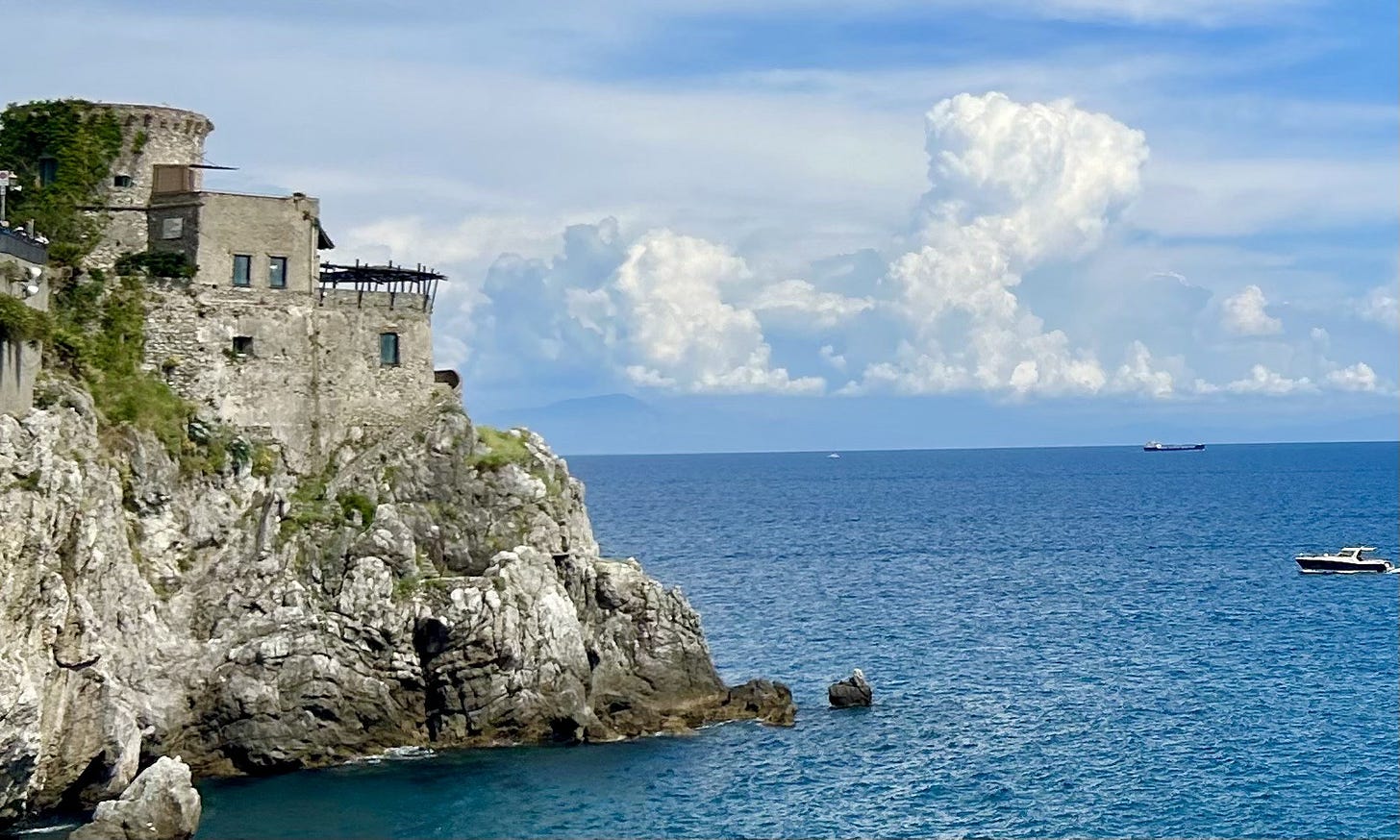As this Substack is dedicated to tips and techniques for immersive worldbuilding, let’s explore the intertwined connection between land and custom.
If we take the picture above as the inspiration for a world or a story we’re creating, let’s delve into some questions to get the creative juices flowing as to how the land shapes daily life and culture.
Often times people’s first experience with another culture is through food, so let’s start there.
What’s the diet of the people of this region?
What local foods are most common?
What foods are considered ubiquitous, so prevalent, that they are almost taken for granted?
What foods, while just as common, are held in higher regard? What foods form the centerpiece of seasonal festivals or rituals? “…give us this day our daily bread…”
What local foods are considered delicacies? A delicacy usually implies a rare quality — reduced availability, extended preparation time, or some other feature which makes the dish a unique treat.
How do these delicacies influence celebrations, social customs, or denote levels within the society?
If your answers to the questions above are following a Pacific Northwest vibe, is there anything you would add or change to give this fantasy world’s flora and fauna a new twist?
There’s clearly an abundance of wood in this setting, so how does this influence the culture? Totem pole carving, caber tossing, and log rolling become easy options for art and sport.
From these options, what elements can we further build into the culture? Building at scale, feats of strength, tests of dexterity could be rites of passage within this new community being created.
There’s probably a fair number of woodcarvers in this land, so how does one distinguish oneself as master in a crowded field? And, what objects most often inspire the artists’ depictions?
As mentioned before, consider the contrast between abundance and rarity. In this working example of an often misty and shaded landscape, let’s assume the inhabitants follow a polytheistic tradition. What is the perception of the sun in song and story? Clearly of undoubted importance, but perhaps the campfire tales speak of the sun as elusive, shy, or fickle.
The red maple leaf of the Canadian flag, the green cedar tree of Lebanon’s flag, and the mountains on the Slovakian flag demonstrate the connection between geography and how groups of people choose to represent themselves — the colors or contours of the land intertwined with identity.
Let’s include another layer to the worldbuilding example above by adding this second landscape. A group of colonists from the forested land have become sun-splashed seafarers, building ports along a craggy coast.
As we pick up the story — centuries have passed, the long-settled colonists adapting to the new geography.
What earlier traditions still survive in this new location? What traditions have undergone change? Which new traditions have emerged?
Take a second look at the picture above. What images do you see in the clouds? Do you see the head of a cobra and the face of a lounging cat?
Thanks for reading Fantasy Worldbuilding. Liking and sharing this article helps a lot. Please consider doing so. Your support is appreciated.






Love the idea of starting with food instead of anything dramatic like warfare and government. It keeps things grounded, and I don't know about you, but I eat more than I go to war. Great post!